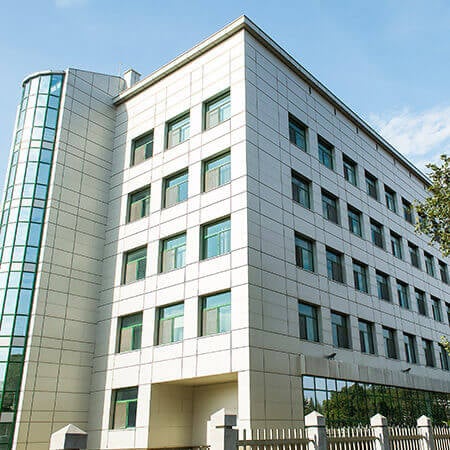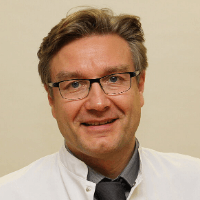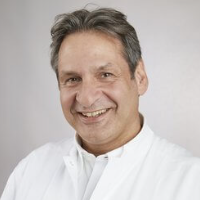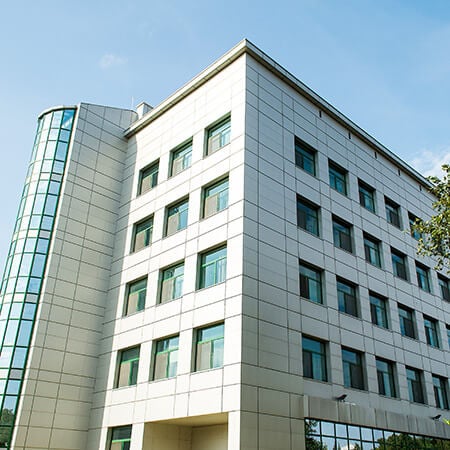Hip Osteoarthritis (coxarthrosis) — Bilateral hip Replacement and Rehabilitation: treatment in the Best Hospitals in the World
Treatment prices are regulated by national law of the corresponding countries, but can also include additional hospital coefficients. In order to receive the individual cost calculation, please send us the request and medical records.
Diagnostic and treatment of Hip osteoarthritis (coxarthrosis)
- Diagnostics
- Hip replacement
- Arthroscopic surgery
- Diagnosis and conservative treatment
- Hip replacement and rehabilitation
- Endoprosthesis replacement in coxarthrosis
- Endoprosthesis replacement in coxarthrosis with rehabilitation
- Treatment with autologous conditioned plasma (ACP)
- Bilateral hip replacement
- Autologous chondrocyte implantation (ACI)

Department of Adult and Pediatric Orthopedics, Trauma Surgery, Foot Surgery, Hand Surgery and Rheumatology
The Department of Adult and Pediatric Orthopedics, Trauma Surgery, Foot Surgery, Hand Surgery and Rheumatology offers the full range of diagnostic and therapeutic services in its areas of specialization. The key areas of work of the department's doctors include large joint arthroplasty, arthroscopic interventions on the knee, hip, and shoulder joints, conservative and surgical treatment of foot and hand diseases and deformities, rheumatic joint lesions, orthopedic diseases in children, and musculoskeletal injuries. The key to successful clinical practice is the professionalism and unique experience of the department's medical team, combined with the advanced infrastructure and state-of-the-art equipment. The department has 5 operating rooms equipped with the latest technology. Most surgical interventions are performed using minimally invasive techniques, due to which, in the shortest possible time, the patient is verticalized, their mobility is restored, and a pronounced pain syndrome is excluded. The department annually performs more than 4,500 surgical interventions, including especially complex ones, so the specialists at the medical facility are rightfully proud of their impressive clinical experience in the surgical treatment of orthopedic diseases. Over the years, the department has gained an excellent reputation not only in Germany but also far beyond its borders.





Department of Adult and Pediatric Orthopedics, Trauma Surgery and Arthroplasty
The Department of Adult and Pediatric Orthopedics, Trauma Surgery and Arthroplasty provides the full range of medical services in the areas of its competence. The department's team of doctors treats patients with diseases and injuries of the musculoskeletal system, joints, bones, tendons, ligaments, and muscles. Orthopedists specialize in partial and total knee, hip, and shoulder replacement surgery, as well as successfully perform revision arthroplasty. Doctors perform arthroplasty at the EndoCert certified Maximum Care Center for Joint Replacement Surgery. The department also has the status of a regional Trauma Center Berlin-Brandenburg, where both common household injuries and severe multiple injuries are effectively treated. The department's team of doctors has a perfect command of advanced conservative and surgical treatment methods in the area of its specialization. Joint replacement surgery is performed here using minimally invasive techniques, which allows the patient to get back on their feet and get rid of pain as quickly as possible. The department has also gained vast experience in arthroscopic treatment of pathologies of large joints and injuries of the tendons, ligaments, and muscles. The department uses an innovative method of cartilage tissue restoration called autologous chondrocyte implantation. Patients of the medical facility receive personalized medical care in comfortable conditions.




Department of Adult and Pediatric Traumatology, Orthopedic Surgery, Spinal Surgery and Foot Surgery
The Department of Adult and Pediatric Traumatology, Orthopedic Surgery, Spinal Surgery and Foot Surgery offers its patients accurate diagnostics and high-quality treatment of the full range of diseases of the musculoskeletal system. The department provides both conservative and surgical treatment of congenital and acquired orthopedic diseases. The medical facility is certified as a regional Trauma Center, so the department's specialists can offer patients of all ages effective treatment for injuries of any severity. The department also has endoCert certification, which confirms the excellent quality of surgery for partial and total knee, hip and shoulder replacement. An equally important focus of the department's work is the treatment of spinal diseases, the excellent results of which are awarded with the certificate of the German Society for Spine Surgery. The department's doctors apply their clinical experience and professional skills to provide optimal treatment and eliminate mobility restrictions for each patient.




Coxarthrosis is the most common degenerative joint disease. The disease develops gradually over many years. At the early stages, drugs and physical exercises, physiotherapy, and reflexology are used for its treatment. However, all of them cannot restore the hip, but only reduce the symptoms of pathology. As a result, the joint is destroyed, and the patient needs its replacement with an artificial endoprosthesis. In severe cases, not one, but two joints are damaged at once. In such cases, bilateral hip replacement is performed.
Content
- Why does coxarthrosis affect two joints at once?
- Timing of joint replacement surgery
- What type of replacement surgery is more profitable?
- Is the preparation necessary?
- How is the surgery performed?
- After surgery
- Rehabilitation period
- Surgery outcomes
- Why is it worth undergoing treatment abroad?
- Treatment in European hospitals with Booking Health
Why does coxarthrosis affect two joints at once?
Coxarthrosis is one of the most common musculoskeletal diseases. It is diagnosed in 10% of patients over 50 years, and after 80 years, the prevalence of pathology increases to 30%.
Many patients need replacement surgery. Hip osteoarthritis is the most common indication for replacement surgery. Moreover, in 15% of cases, doctors have to replace two joints at once. This type of replacement is called bilateral surgery.
Coxarthrosis develops due to the gradual wear and tear of the joints. Its main risk factors are obesity, high physical activity, and congenital weakness of the musculoskeletal structures. These risk factors affect not one, but all joints of the lower limbs at once. Although the degenerative processes develop faster in one of them, most patients also have signs of coxarthrosis in the opposite joint. Sometimes they are so severe that doctors have to resort to bilateral replacement surgery.
Bilateral hip replacement is substitution of both hip joints with prosthesis in people with bilateral hip osteoarthritis.
Cost of bilateral replacement surgery in hip coxarthrosis is from €24,730. You can find prices for other treatment options and hip rehabilitation on the Booking Health website.
The best hospitals in Europe are:
- University Hospital Rechts der Isar Munich
- University Hospital of Ludwig Maximilian University of Munich
- University Hospital Ulm
- University Hospital Frankfurt-am-Main
- Vitos Orthopedic Clinic Kassel
Timing of joint replacement surgery
With severe bilateral hip osteoarthritis, hip replacement surgery can be:
- Single-stage.
- Two-stage.
Single-stage replacement surgery has obvious advantages: one operation instead of two, one recovery period instead of two. The total duration of hospital stay and the period of disability is reduced. However, there are also disadvantages: recovery after hip replacement is more complex. In addition, these surgeries carry more health risks, and therefore are avoided in elderly patients. Moreover, this category of people most resorts to replacement surgery.
It is safer for health to treat hip osteoarthritis using a two-stage approach. In this case, revision surgery can be performed at different times:
- In 6-12 months, after the patient's complete rehabilitation.
- 2-3 months after hip replacement – before full recovery, but after the endoprosthesis grows into the bone, since in this case the support ability of the limb is achieved.
- After 2-3 weeks – while the overall rehabilitation period is reduced to a minimum, the treatment becomes less risky to health as compared to the single-stage bilateral replacement.
The most common approaches involve two-stage hip replacement, but this option is not without its drawbacks. The time until the achievement of the final result of treatment is increased. The overall period of hospitalization and rehabilitation increases. In addition, after the first operation, the patient has to use mainly the leg that has not yet been operated on, which increases the load on the opposite thigh and aggravates coxarthrosis. Another disadvantage is the high cost of treatment. It increases by an average of 30%.
Thus, both variants of bilateral replacement surgery are used in medicine. In each case, the best treatment method is chosen individually with due consideration of the condition of the affected joints, the age and general condition of the patient, taking into account the wishes of the patient.
What type of replacement surgery is more profitable?
On average, the single-stage hip replacement is 30% cheaper. The patient will still have to buy two prostheses, and the operation is more expensive. However, a person can save money, because there is no need to undergo diagnostics twice. The period of hospitalization is also reduced by 2 times. The significant savings are achieved by reducing the period of rehabilitation.
Nonetheless, it is worth bearing in mind that one-time expenses on total replacement of two joints at once in coxarthrosis will be higher. A person has to buy two prostheses at once. Although the costs of two-staged hip replacement surgery are higher, they are stretched over time because several months pass between two surgical procedures.
The exact prices for hip replacement can be found on the Booking Health website. We present the current cost in different hospitals. You can compare prices in order to book your medical care program at an affordable price.
Is the preparation necessary?
The preparation is necessary for bilateral hip replacement surgery. It is much more important than for unilateral replacement surgery. This is especially true for single-stage interventions, in which the risk of complications is higher.
The patient should stop smoking at least 1 month before surgery. Nicotine causes a spasm of small vessels. As a result, blood circulation in the tissues is disrupted, and wounds heal more slowly. Smoking impairs the immune system, and therefore the risk of infectious complications of any surgery increases.
It is necessary to lose weight. Obesity not only increases the load on the thigh, but also disrupts metabolic processes in the body. Like smoking, being overweight impairs immunity and metabolism. Severe obesity is considered a contraindication to the replacement of large joints of the lower limb.
After surgery, the patient will have to use his hands more often than his feet. The main load will fall on them. Therefore, it is necessary to start training in advance to strengthen the muscles of the torso and upper limbs. They are often supplemented with electrical stimulation to help build muscle faster.
Immediately prior to the operation, a person undergoes a number of tests and instrumental examinations. He is taught to walk with support, move on stairs, on an inclined surface, lie down, sit down, sit and get up from a chair.
How is the surgery performed?
The essence of bilateral total hip replacement is the same as that of unilateral one. The doctor makes a 10-12 cm incision in the skin. He removes the patient's own joint, drills out the bone and prepares it for the implantation of the prosthesis. After that, an artificial joint is implanted, which consists of a pelvic and femoral component.
The femoral component attaches to the femur and becomes its extension. It consists of a leg, a neck and a head. The last one provides the necessary range of motion by rotating in the artificial acetabulum.
The pelvic (acetabular) component consists of a cup and liner. It is attached to the pelvic bone with screws or cement. The femoral head rotates inside the cup, thereby providing mobility of the lower limb.
In standard cases, the operation on one joint lasts about 1 hour. Accordingly, the doctors need about 2 hours for bilateral total replacement surgery. In complex clinical cases, the duration of the surgical intervention can be increased by 2 times or more.
The surgery is performed under general anesthesia. Spinal anesthesia can sometimes be used as well. In this case, the patient is conscious. He does not need to recover from anesthesia for a long time, so rehabilitation can be started earlier. This is especially important for debilitated elderly patients, since their early activation reduces the risk of complications.
After surgery
Early rehabilitation starts from the very first days. It is important to activate the patient as soon as possible not only for the joint, but also for health in general. Already in the first hours after total replacement surgery, the patient can move in bed and do physical exercises. The next day, he gets out of bed – first, with the help of the medical staff, and then on his own.
Doctors can leave tubes in the wound for liquid (blood and lymph) outflow. This is necessary so that fluid does not accumulate in the tissues. After 1-2 days, the drains are removed.
In the first days, the patient is administered anticoagulants and antibiotics. They help prevent thromboembolic and infectious complications.
In the early postoperative period after the surgical treatment of coxarthrosis, the patients experience pain, but it can be relieved with drugs. The doctors in European hospitals use preventive analgesia, namely, the pain is treated before it appears. In this case, less drugs are needed and mild opiates can be used instead of strong ones. The tolerability of the postoperative period is also improved.
The first bandaging is done the next day. Then the bandaging is made every 2-3 days until the wound is completely healed.
The recommendations for this period are as follows:
- Patients should sleep only on their back.
- Leg should be in the abduction position, and a roller should be placed between the legs.
- Patients should roll over with a roller between their legs.
- Patients should not bend their legs at the knee or hip more than 90 degrees.
- Patients should avoid sudden movements.
- Patients should not rotate their hip.
The stitches are removed 2 weeks after total replacement surgery. Most patients are discharged from the hospital during this time. When using dissolvable sutures, they do not need to be removed.
Rehabilitation period
The patients require long-term recovery after hip replacement. It will take several months for the bone to heal. In addition, with two-stage intervention, the patient will have to undergo rehabilitation twice.
Physical training plays a major role in the patient's recovery. European hospitals offer excellent conditions for patients: here they can exercise on modern simulators, use robotic systems and exoskeletons. As a result, even rehabilitation after single-stage bilateral hip replacement surgery is quick, efficient and comfortable.
The specialists from various medical fields take part in the rehabilitation process. These are rehabilitation therapists, physical therapy instructors, massage therapists, physiotherapists. The patients are regularly examined to assess hip function and health. The rehabilitation program is developed individually and adjusted every few days, taking into account the results achieved.
In the first month of rehabilitation, the main goal of the measures is to prevent blood stagnation in the thigh, ensure normal tissue healing, and eliminate edema. The workouts for muscle strengthening begin gradually. It depends on the state of the muscle tissue how mobile the joint will be.
In the second or third month of rehabilitation, the buildup of muscle strength continues. Patients train coordination and practice walking skills. Then they improve their household and work skills to return to social and professional life.
Surgery outcomes
Total replacement surgery is the most effective treatment method for bilateral hip osteoarthritis. If the patient suffers from chronic pain before surgery, cannot walk, or uses a cane, then after surgery:
- Range of motion in the hip is completely restored.
- Pain relief occurs.
- Ability to support the limbs is restored.
- Active life becomes possible.
- Ability to work is restored.
- Gait is normalized.
The quality of life after bilateral total replacement becomes the same as it was before the development of hip osteoarthritis, if there are no other diseases that worsen the patient's health.
Why is it worth undergoing treatment abroad?
For the treatment of coxarthrosis, many patients from countries with a low level of medicine prefer to go to Europe. Despite the higher cost of treatment, Western countries have better quality medicine. Tens of thousands of total replacement surgeries of large joints are performed here every year.
Booking Health can arrange your trip to one of the best orthopedic clinics. Here are several reasons for you to undergo bilateral hip replacement surgery in Europe:
- Safe surgery. Complications are extremely rare.
- New types of hip prostheses are implanted through smaller incisions, which reduces the trauma of surgical interventions.
- The use of high-quality hip endoprostheses that will serve for decades.
- In most cases, patients will not need to have revision hip replacement surgery in the future.
- It is possible to perform not only two-stage, but also single-stage bilateral hip replacement.
- High-quality rehabilitation, which allows the patient to quickly restore both self-care ability and work capacity.
Treatment in European hospitals with Booking Health
To undergo treatment in European hospital, please use the Booking Health services. On our website, you can see the cost of treatment in different hospitals, compare prices and book a medical care program at an affordable price.
Please contact the Booking Health specialists to undergo treatment in European hospital. Here are our benefits for you:
- We will choose the best European hospital whose doctors specialize in hip replacement surgery.
- We will help you overcome the language barrier, establish communication with your attending physician.
- We will reduce the waiting time for the medical care program and book a doctor's appointment on the most suitable dates for you.
- We will reduce the price. The cost of treatment in European hospitals will be decreased due to the lack of additional coefficients for foreign patients.
- We will take care of all organizational issues: documents for entering the country, transfer from the airport, hotel, interpreter, etc.
- We will prepare a program and translate medical records. You do not have to undergo previously performed diagnostic tests.
- We will provide communication with the European hospital after the completion of the medical care program.
- We will organize additional medical examinations and treatment in European hospitals, if necessary.
- We will buy medicines abroad and forward them to your native country.
- We will help you keep in touch with the European hospital after the completion of the medical care program.
Booking Health makes treatment in European hospitals easier, faster and cheaper. We will fully organize your trip, and you will only have to focus on restoring your health.
Authors: Dr. Vadim Zhiliuk, Dr. Sergey Pashchenko